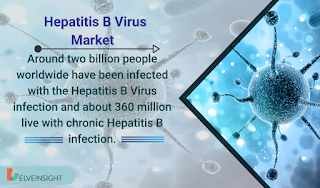Cyclin-dependent kinase
Cyclin-dependent kinase overview
Cyclin-dependent kinases (CDKs) belong to a protein
serine/threonine kinases whose activity depends on association with a
noncatalytic regulatory subunit called a cyclin. Cyclin-dependent kinases
inhibitors are vital for progression through the cell cycle and proliferation.
The genes that encode CDKs were initially identified in screens for conditional
mutants of Saccharomyces cerevisiae which reversibly arrested at characteristic
points in the cell cycle upon transfer to the restrictive conditions. Cyclins
were initially named for their periodic accumulation and degradation (cycling)
through the early cell cycles of fertilized sea urchin eggs. This research
identified a ubiquitous cell cycle engine responsible for coordinating cell
growth, DNA replication, and mitosis in the orderly fashion required to ensure
the viability of progeny cells.
All eukaryotes have a various cyclins, each of which acts
during a specific stage of the cell cycle. All cyclins are given names
according to the stage at which they assemble with Cyclin-dependent kinases.
The classes of cyclins involves G1-phase cyclins, G1/S-phase cyclins, S-phase
cyclins, and M-phase cyclins. M-phase cyclins make M-CDK complexes and lead the
entry of cell into mitosis; G1 cyclins form G1-CDK complexes and drive the
progress of cells through the G1 phase.
All Cyclin-dependent kinases present in equal amounts
throughout the entire cell cycle. The cyclin produce and malfunction change by
stage with cell cycle advancement dependent on the new cyclin molecules
synthesis. The cells produce G1- and G1/S-cyclins at different times during the
G1 phase, and they produce M-cyclin molecules during the G2 phase. Cyclin
degradation is equally essential for advancement through the cell cycle.
Specific enzymes fail cyclins at specific times in the cell cycle. When cyclin
levels go low, the corresponding CDKs become inoperative. Cell cycle arrest can
happen if cyclins fail to degrade.
Each of the cyclin-CDK complexes in a cell alters a
particular group of protein substrates. Proper phosphorylation of these
substrates ought to happen at specific times in order for the cell cycle to
continue. Because cyclin-CDK complexes recognize multiple substrates, they can
correlate the various events that happen during each phase of the cell cycle.
For example, at the start of S phase, S-CDK catalyzes the phosphorylation of
the proteins that start DNA replication by admitting DNA replication complexes
to make. During mitosis, M-CDKs phosphorylate a broad range of proteins. These
involve condensin proteins that are vital for the substantial condensation of
mitotic chromosomes, and lamin proteins, which make a stabilizing network under
the nuclear membrane, which dismantles during mitosis. M-CDKs also control the
assembly of the mitotic spindle by phosphorylating proteins that regulate
microtubule behaviour. The effect of these coordinated phosphorylation
reactions is the final division of chromosomes during mitosis.
Hence, the life cycle of a cell is a prudently controlled
series of events arranged by a suite of enzymes and other proteins. The main
controlling components of cell cycle regulation are cyclins and CDKs. Depending
on the occurrence and action of these proteins, the cell cycle can be fast or
sluggish and it may even stop altogether.


Comments
Post a Comment